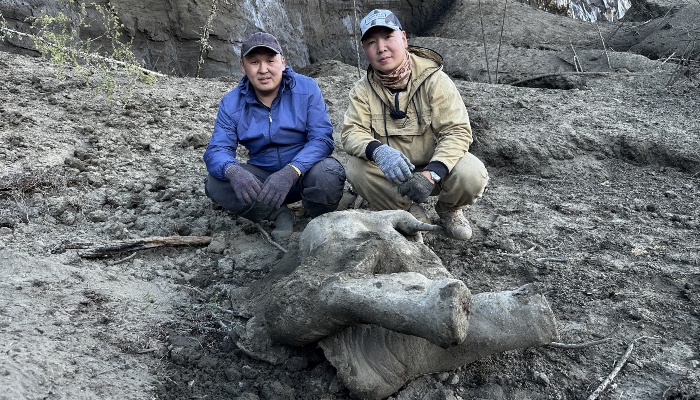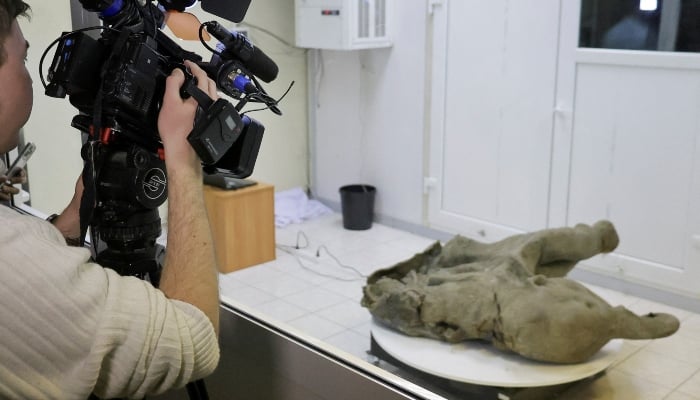Researchers in Siberia are conducting tests on a juvenile mammoth whose remarkably well-preserved remains were discovered in thawing permafrost after more than 50,000 years.
The creature, resembling a small elephant with a trunk, was recovered from the Batagaika crater, a huge depression more than 80 metres (260 feet) deep which is widening as a result of climate change.
The carcass, weighing more than 110 kg (240 pounds), was brought to the surface on an improvised stretcher, said Maxim Cherpasov, head of the Lazarev Mammoth Museum Laboratory in the city of Yakutsk.

He said the mammoth was probably a little over a year old when it died, but tests would enable the scientists to confirm this more accurately. The fact that its head and trunk had survived was particularly unusual.
“As a rule, the part that thaws out first, especially the trunk, is often eaten by modern predators or birds. Here, for example, even though the forelimbs have already been eaten, the head is remarkably well preserved,” Cherpasov told Reuters.

It is the latest of a series of spectacular discoveries in the Russian permafrost. Last month, scientists in the same vast northeastern region – known as Sakha or Yakutia – showed off the 32,000-year-old remains of a tiny sabre-toothed cat cub, while earlier this year a 44,000-year-old wolf carcass was uncovered.


